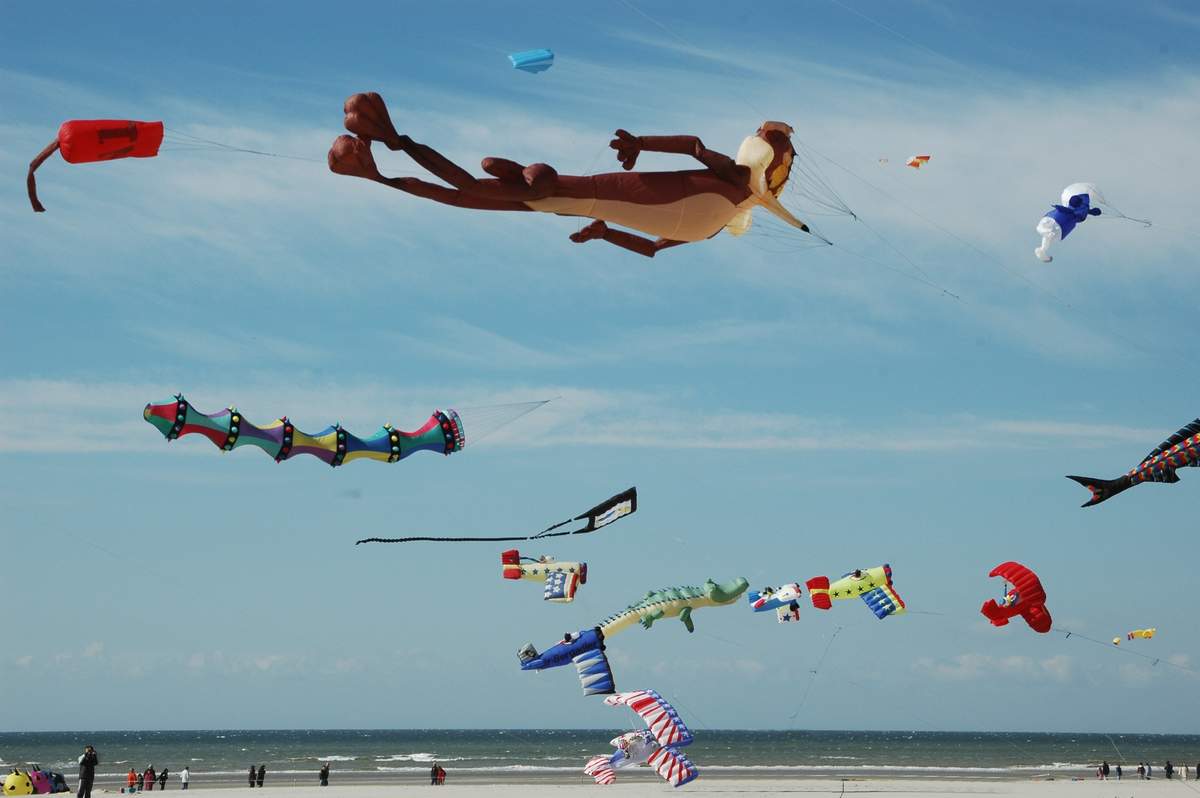Intimate Tickles Thought You Might Be Interested
Published: Fri, 15 Jun 2018 05:00:00 +0000
View Original Article

Fly a Kite Day takes place on the anniversary of the date in 1752 when Benjamin Franklin flew a kite in a thunderstorm, with the intent of proving that lightning was caused by a discharge of electricity (some sources say he flew his kite on June 10). His experiment led to further understanding of positive and negative charges, the proving that lightning was an electrical discharge, and to the invention of the lightning rod—which provided a safe way to discharge electricity and a way to prevent fires. Lightning rods are still used today to protect buildings, ships, and people.
Franklin began his experiments with electricity in 1747 and began hypothesizing about the connection between electricity and lightning two years later. He set out to prove his hypothesis; his idea was to erect iron rods into storm clouds to attract electricity. He believed he would need to be on high ground for his experiment to work, but he was in Philadelphia, a city that is quite flat. At first, he was waiting for the steeple to be finished at Christ Church, believing that he could use it for his experiment.
Franklin wrote about his iron rods idea to Peter Collinson, a member of the Royal Society of London, but the group did not see the importance of the idea. Soon afterward, though, his idea did attract the attention of French scientists Delor and Dalibard. Shortly before Franklin did his own experimenting, unbeknownst to him, they successfully completed his iron rod experiment, and called it the “Philadelphia experiment.”
Franklin decided to test his theory by flying a kite instead of waiting for the steeple to be finished on the church. Accompanied by his son William, he built a kite with cedarwood and a silk handkerchief and attached a foot of wire to the top of it to act as a conductor. At the bottom of the kite was string, and at the point the string was held was a silk ribbon and a metal key. A metal wire connected to the key and went to a Leyden jar.
As Franklin flew his kite in a lightning storm, he kept dry by standing in a barn. The kite was not struck, but the conductor gained negative charges. They went through the kite, string, key, and to the Leyden jar. This showed that a conductor could be used to channel electricity into the ground. At one point, he moved his hand close to the key and gained a shock because of the positive charge of his body. Franklin later was credited with coming up with various electricity-related terms. Fittingly, today is also National Electricity Day.
Kites were used for centuries before Benjamin Franklin did his experimenting. It is believed that kites came from Shangdong, an eastern province of China; they were spread to India by traders, who brought them to Korea and then across Asia. Different styles of kites, as well as different cultural purposes for flying them, came about in different locations. Early kites were often made with bamboo, and covered with silk and paper. In 1295 CE, European explorer Marco Polo documented kites and how to fly them. By the sixteenth century, books and literature had publicized kites as children’s toys, which helped them gain in popularity.
Eventually, kites began being used for science. In 1749, Scottish meteorologist Alexander Wilson measured air temperature at 3,000 feet with a thermometer attached to a kite. Three years later, Benjamin Franklin did his experimenting which gave us Fly a Kite Day. The Wright brothers used kites for research when they were building the first airplane in the late 1800s. In the first half of the twentieth century, new kite designs began taking flight, such as the diamond kite, tetrahedral kite, flexible kite, sled kite, and parafoil kite. Starting in the 1950s, NASA began using kites for spaceship recovery. Over the years kites have also been used for surveillance during war. The American Kitefliers Association was formed in 1964. With so many uses, both for leisure and science, kites are well deserving of being celebrated today.
Fly a Kite Day, also known as Go Fly a Kite Day, is being observed today! It has always been observed annually on June 15th.
